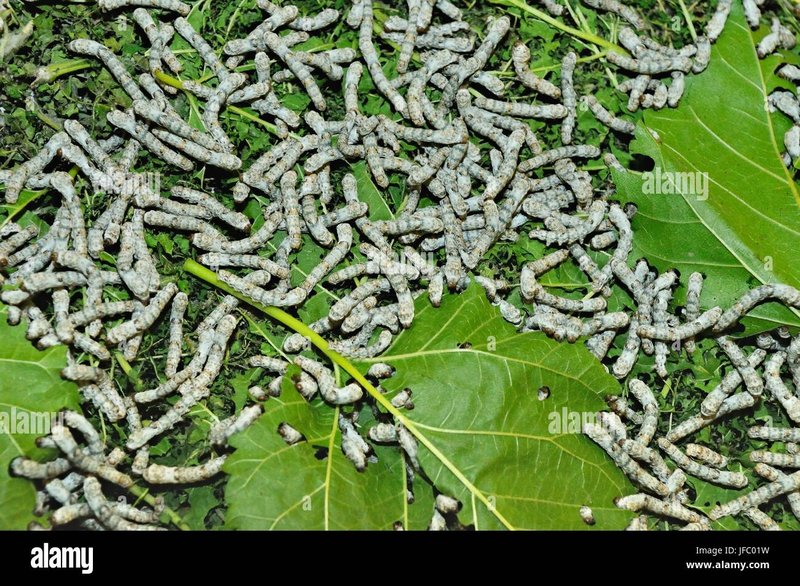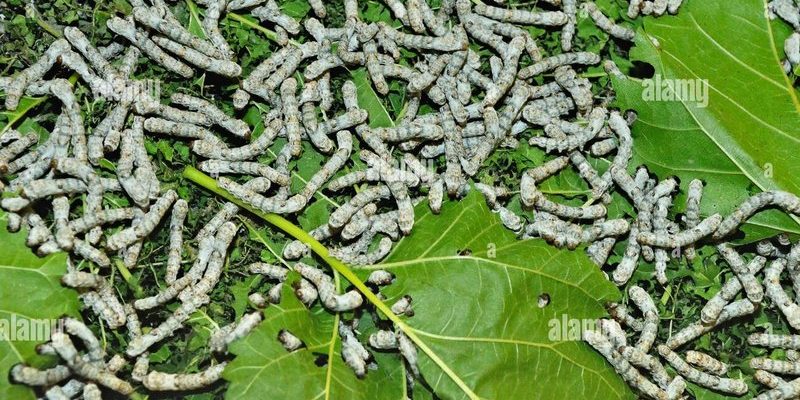
Stress can arise from various factors, including temperature fluctuations, humidity changes, and even the presence of predators. It’s pretty much like you trying to focus on your work in a noisy coffee shop. These triggers can push silkworms to adapt in surprising ways. Let’s dive into their world and explore how these resilient little fellows respond when the going gets tough.
Understanding Silkworms and Their Environment
Silkworms, or *Bombyx mori*, are the larvae of the silk moth. They thrive in controlled environments, mainly for commercial silk production. Just like how plants need sunlight and water, silkworms require specific conditions to grow and produce silk effectively.
In their natural habitat, silkworms are sensitive to changes in their environment. Temperature, light, and humidity levels are crucial for their growth and the quality of silk they produce. For example, an increase in temperature can lead to faster growth but might also stress them if it exceeds their comfort zone. Here’s what you need to know about their preferred conditions:
- Temperature: Ideal range is between 25°C to 30°C (77°F to 86°F).
- Humidity: They thrive in 60% to 70% relative humidity.
- Light: Silkworms prefer a dim environment to mimic their natural habitat.
These specific needs mean that any significant deviation from their ideal conditions can trigger stress responses.
Types of Environmental Stressors
There are several environmental stressors that silkworms can face, and it’s fascinating how each one impacts them differently. Let’s break down some common stressors:
Temperature Extremes
Temperature swings can be a real challenge. In extreme heat, silkworms may become sluggish or even stop eating, which can affect their growth and silk production. On the opposite end, cold temperatures can slow their development significantly, leading to longer rearing periods.
Humidity Changes
Humidity is another big player. If the air is too dry, silkworms can become dehydrated, which affects their ability to spin silk. Conversely, excessive moisture can lead to fungal infections. It’s a delicate balance that they need to maintain.
Pest Presence
Predators and pests are like the unwanted guests at a gathering. Mites or other unwanted intruders can stress silkworms out. They may react by hiding or changing their feeding patterns, which ultimately slows down silk production.
Understanding these stressors is crucial for anyone involved in sericulture, the practice of raising silkworms for silk production.
Physiological Responses to Stress
When faced with stress, silkworms have some fascinating physiological reactions. Think of it as their body going into high alert mode. Here’s how they typically respond:
Hormonal Changes
The first thing that happens is a spike in specific hormones, which can trigger various survival mechanisms. For instance, a hormone called *ecdysteroid* plays a significant role in their molting process and growth. Increased levels may lead to rapid growth under stress, but it can also lead to molting problems if stress persists.
Behavioral Adjustments
Silkworms may alter their feeding behavior. In times of stress, they might eat less or stop altogether. This is a natural response to conserve energy. They might also cluster together, seeking refuge in numbers—a classic survival tactic.
Improved Silk Production
Interestingly, some stressors can lead to an increase in silk production. When silkworms are under pressure, they often produce more silk to create a protective cocoon, essentially acting as a safety net. This is akin to us working extra hard to meet a deadline when our jobs are on the line.
The Role of Nutrition and Care
Nutrition plays a vital role in how well silkworms can cope with stress. Providing the right diet can make a world of difference.
Optimal Diet Components
Silkworms primarily feed on mulberry leaves. A balanced diet rich in nutrients helps bolster their immune systems, making them better equipped to handle stress. Here’s how you can ensure they’re well-fed:
- Fresh Mulberry Leaves: These should be free from pesticides and ideally harvested daily.
- Supplements: Sometimes, giving them additional calcium or vitamins can help strengthen their resilience.
- Clean Water: Access to clean, fresh water is crucial for hydration and overall health.
You’d be surprised how a bit of extra care can improve their survival rate during challenging times.
Environmental Management Tips
If you’re working with silkworms, ensuring a stable environment is key. Here are some straightforward tips:
Control Temperature and Humidity
Using thermostats and hygrometers can help monitor these conditions. If you notice temperatures rising too high, consider using fans or air conditioning. For humidity, misting the environment can help, but avoid overdoing it to prevent mold.
Protect Against Pests
Regularly clean the rearing environment and check for any signs of pests. Using natural pest deterrents can keep unwanted guests away without harming your silkworms.
Monitor Health Regularly
Keep an eye on their behavior and appearance. If they’re eating less or acting sluggish, investigate. Early detection can often prevent larger issues down the road.
Silkworms might be small, but their reactions to environmental stress can tell us a lot about resilience. Just like us, they face challenges that can affect their overall well-being. By understanding how they respond to stress—be it through physiological changes or behavioral adjustments—we can better care for them.
From managing their environment to ensuring they have the right nutrition, every little effort counts. These tiny creatures remind us that, even under pressure, there’s always a way to adapt and thrive. So, whether you’re a curious observer or a dedicated silk farmer, appreciating the resilience of silkworms can truly transform how you view them. Remember, stress might come in many forms, but the ability to react and adapt is the real magic.

